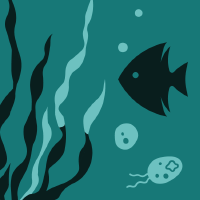Topic Menu
► Topic MenuTopic Editors





Aquatic Ecological Monitoring and Wastewater Treatment in Agricultural Systems
Topic Information
Dear Colleagues,
Water quality and ecological management are the most important components of the agricultural economy and system development. In addition, facilities that can deal with pollutants generated by agriculture are also of great importance (e.g., wastewater treatment facilities), due to the possibility that another harmful compound may be produced as a result of agricultural processes. Various organic and inorganic compounds that are used to grow crops are, as a result of rainfall, likely to enter nearby rivers or streams as nonpoint pollutants, which adversely affects the agricultural ecosystem. However, studies of predictive techniques are needed because precipitation is frequent and has become unpredictable due to climate change. Agriculture has the longest history among numerous industries and is both directly and indirectly related to the development of human life. Therefore, for agricultural growth, it is necessary to make predictions regarding the agricultural aquatic ecosystem in terms of its response to various environmental changes, and this can be achieved through the use of modeling techniques combined with data on water quality and ecological monitoring results. This Topic will focus on monitoring and modeling for water quality, ecosystem, wastewater facility, phytoplankton and zooplankton, taste order compounds, nonpoint sources, and anthropogenic impact. We welcome novel research, reviews, and opinion pieces covering all related topics.
Dr. Jongkwon Im
Dr. Xuwang Zhang
Prof. Dr. Laura Bulgariu
Dr. Christos S. Akratos
Prof. Dr. Francisco Osorio
Topic Editors
Keywords
- water quality
- phytoplankton/zooplankton
- wastewater
- emerging pollutants
- modeling
- taste odor compounds
- micro/trace pollutants
- nonpoint pollutants
- climate change/hydrological processes
- anthropogenic impacts
Participating Journals
| Journal Name | Impact Factor | CiteScore | Launched Year | First Decision (median) | APC |
|---|---|---|---|---|---|

Agronomy
|
3.7 | 5.2 | 2011 | 15.8 Days | CHF 2600 |

Water
|
3.4 | 5.5 | 2009 | 16.5 Days | CHF 2600 |

Hydrobiology
|
- | - | 2022 | 23.3 Days | CHF 1000 |

MDPI Topics is cooperating with Preprints.org and has built a direct connection between MDPI journals and Preprints.org. Authors are encouraged to enjoy the benefits by posting a preprint at Preprints.org prior to publication:
- Immediately share your ideas ahead of publication and establish your research priority;
- Protect your idea from being stolen with this time-stamped preprint article;
- Enhance the exposure and impact of your research;
- Receive feedback from your peers in advance;
- Have it indexed in Web of Science (Preprint Citation Index), Google Scholar, Crossref, SHARE, PrePubMed, Scilit and Europe PMC.

